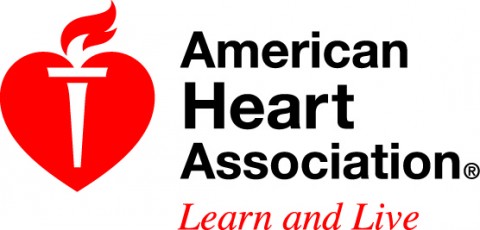Circulation Journal Report
 Dallas, TX – Men develop a type of irregular heartbeat, known as atrial fibrillation, about a decade earlier than women on average, and being overweight is a major risk factor, according to a large new study published in the American Heart Association’s journal Circulation.
Dallas, TX – Men develop a type of irregular heartbeat, known as atrial fibrillation, about a decade earlier than women on average, and being overweight is a major risk factor, according to a large new study published in the American Heart Association’s journal Circulation.
In atrial fibrillation, the upper chambers of the heart, or atria, quiver instead of beat to move blood effectively.

Untreated atrial fibrillation increases the risk of heart-related death and is linked to a five times increased risk of stroke.
In the new research, having the condition more than tripled a person’s risk of dying.
“It’s crucial to better understand modifiable risk factors of atrial fibrillation,” said study author Christina Magnussen, M.D., a medical specialist in Internal Medicine and Cardiology at the University Heart Center in Hamburg, Germany. “If prevention strategies succeed in targeting these risk factors, we expect a noticeable decline in new-onset atrial fibrillation.”
This would lead to less illness, fewer deaths and lower health-related costs, she said.
Researchers reviewed records of 79,793 people (aged 24 to 97) in four community-based studies in Europe. The participants did not have atrial fibrillation at the outset. Later assessments of their health — with a median follow-up period of 12.6 to a maximum of 28.2 years — showed that 4.4 percent of the women and 6.4 percent of the men had been diagnosed with the condition.
Researchers noted atrial fibrillation:
- Diagnosis rates jumped when men were 50 or older and women were 60 or older;
- Developed in about 24 percent of both men and women by age 90;
- Onset was tied to higher blood levels of C-reactive protein (inflammation marker) in men; and
- New atrial fibrillation cases increased more in men than women with increases in body mass index (BMI): 31 percent in men and 18 percent in women.
“We advise weight reduction for both men and women,” Magnussen said. “As elevated body mass index seems to be more detrimental for men, weight control seems to be essential, particularly in overweight and obese men.”
Researchers were surprised to find that higher total cholesterol, a risk factor for heart disease, lowered risk for developing atrial fibrillation, especially in women, although exactly why is not clear.
Due to its design, the study could not shed light on pathophysiological factors causing sex differences in atrial fibrillation risk. The authors also note that atrial fibrillation might have been underdiagnosed at the study’s start and later records may not reflect all cases. Strengths of the research include that it studied the condition in the general population and noted how individuals fared over long periods.
Since study participants were from both northern and southern Europe, the findings will probably apply to other Caucasian populations but cannot be generalized to other groups, Magnussen said. However, since BMI in the study was such a strong risk factor for atrial fibrillation, it is likely to also be impactful in other groups, she added.
The study, part of the BiomarCaRE (Biomarker for Cardiovascular Risk Assessment in Europe) project, was co-funded by the European Union Seventh Framework Programme and involved researchers from nearly a dozen countries. Additional sources of funding are listed in the manuscript.
Co-authors are Teemu Niiranen, M.D.; Francisco M. Ojeda , Ph.D.; Francesco Gianfagna, M.D., Ph.D.; Stefan Blankenberg, M.D.; Inger Njølstad, M.D., Ph.D.; Erkki Vartiainen, M.D., Ph.D.; Susana Sans, M.D., Ph.D.; Gerard Pasterkamp, M.D., Ph.D.; Maria Hughes, Ph.D.; Simona Costanzo, Ph.D.; Maria Benedetta Donati, M.D., Ph.D.; Pekka Jousilahti, M.D., Ph.D.; Allan Linneberg, M.D., Ph.D.; Tarja Palosaari, M.Sc.; Giovanni de Gaetano, M.D., Ph.D.; Martin Bobak, M.D., M.Sc., Ph.D.; Hester den Ruijter, Ph.D.; Ellisiv Mathiesen, M.D., Ph.D.; Torben Jørgensen, M.D., Ph.D.; Stefan Söderberg, M.D.; Kari Kuulasmaa, Ph.D.; Tanja Zeller, Ph.D.; Licia Iacoviello, M.D., Ph.D.; Veikko Salomaa, M.D., Ph.D. and Renate B. Schnabel, M.D., M.Sc. Author disclosures are on the manuscript.
Additional Resources:
- View the manuscript online.
- Learn more about Atrial Fibrillation (AF or AFib)
- Follow AHA/ASA news on Twitter @HeartNews
- For updates and new science from the Circulation journal follow @CircAHA



